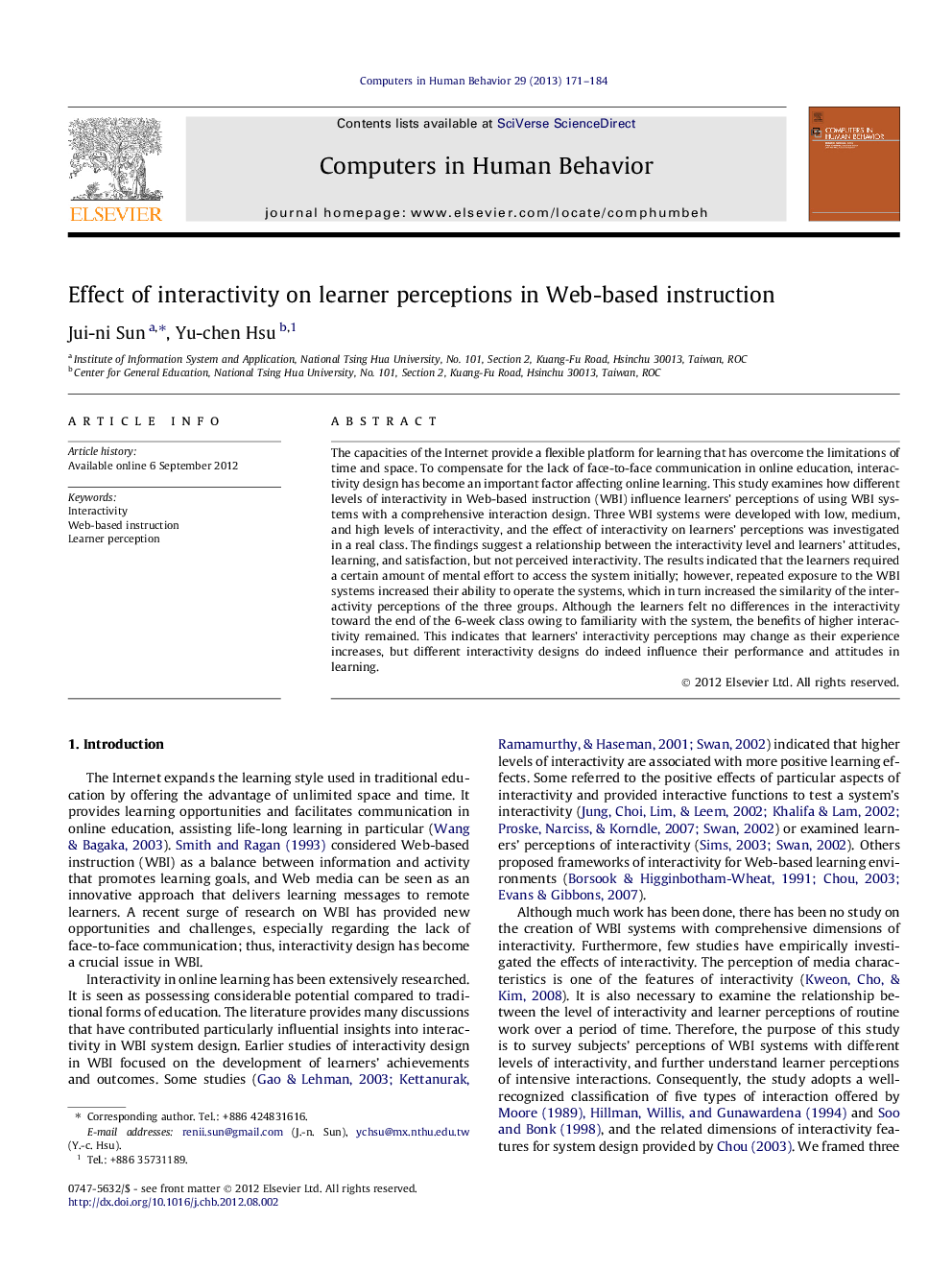| Article ID | Journal | Published Year | Pages | File Type |
|---|---|---|---|---|
| 351164 | Computers in Human Behavior | 2013 | 14 Pages |
The capacities of the Internet provide a flexible platform for learning that has overcome the limitations of time and space. To compensate for the lack of face-to-face communication in online education, interactivity design has become an important factor affecting online learning. This study examines how different levels of interactivity in Web-based instruction (WBI) influence learners’ perceptions of using WBI systems with a comprehensive interaction design. Three WBI systems were developed with low, medium, and high levels of interactivity, and the effect of interactivity on learners’ perceptions was investigated in a real class. The findings suggest a relationship between the interactivity level and learners’ attitudes, learning, and satisfaction, but not perceived interactivity. The results indicated that the learners required a certain amount of mental effort to access the system initially; however, repeated exposure to the WBI systems increased their ability to operate the systems, which in turn increased the similarity of the interactivity perceptions of the three groups. Although the learners felt no differences in the interactivity toward the end of the 6-week class owing to familiarity with the system, the benefits of higher interactivity remained. This indicates that learners’ interactivity perceptions may change as their experience increases, but different interactivity designs do indeed influence their performance and attitudes in learning.
► WBI systems designed with five types of interaction in hybrid learning environment. ► Interactivity is a multidimensional concept, and the interactions are interrelated. ► Higher interactivity levels produce higher learner perceptions with practice. ► Gradually increases functions and completely adopt them for learning activities.
